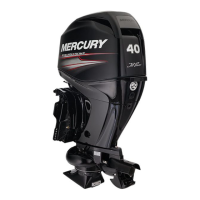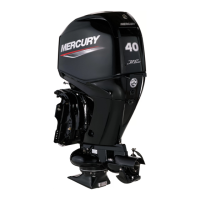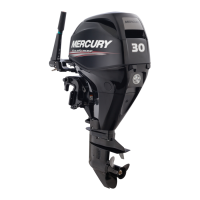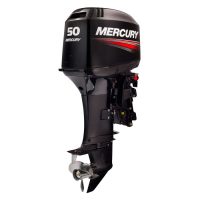OPERATION
eng 67
Operating in Shallow Water
The life of the impeller and water intake can be greatly increased
by avoiding the intake of sand and gravel. The intake suction will
act like a dredge when the water intake comes close to the
bottom. It is better to stop the engine and drift up to shore when
landing, and to shove off with an oar when leaving. The engine
can idle through areas of water less than 61 cm (2 ft) deep, but
there should be more than 61 cm (2 ft) of water under the boat
when increasing speed to reach full plane.
Once the boat is on plane, the boat speed will prevent the
ingestion of gravel and other debris from the bottom. The suction
is still present, but the water intake passes too quickly over the
bottom to allow debris to be drawn into the water intake.
When boating through shallow water areas, choose a course of
travel that avoids sharp rocks and other underwater obstacles
that could damage the boat. Running the boat through these
areas on full plane may be helpful as the boat will be riding
higher in the water. If the boat gets stuck on the bottom,
immediately stop the engine and move the boat to deeper water.
How the Jet Drive Operates
A jet driven boat has substantially different handling
characteristics compared to a propeller driven boat. It is
recommended that the operator adjusts to these characteristics
by experimenting in open water at both high and low speeds.
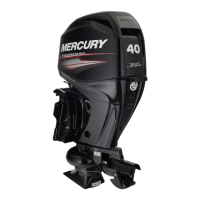
